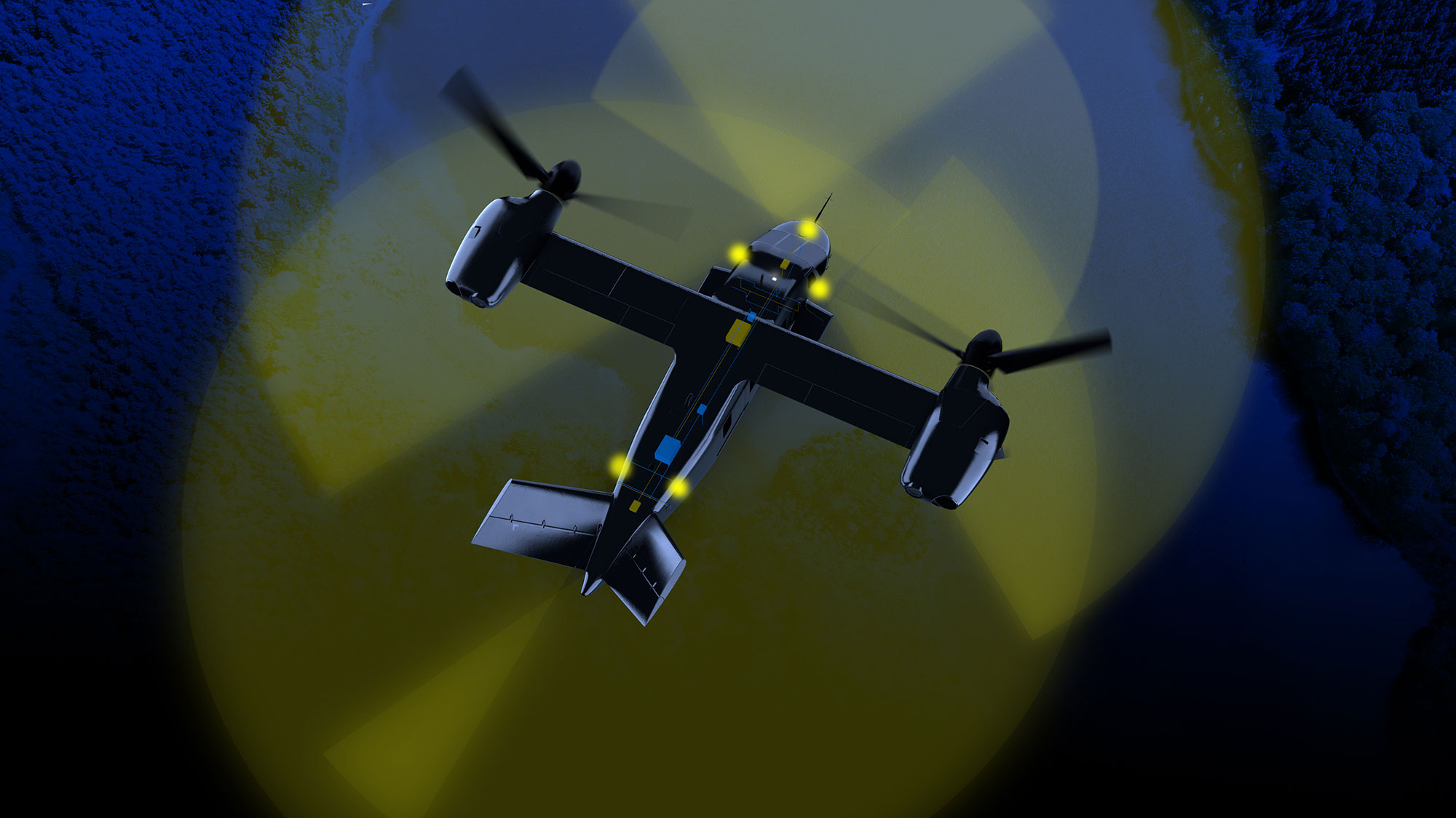Ten Things to Know about the Future of Vertical Lift


The Future of Vertical Lift is Here
It’s a once-in-a-generation opportunity to provide warfighters the most capable rotorcraft and associated systems as the Army and other services enhance, and eventually replace, their current helicopter fleets. Our technical knowledge is deep and built on decades of experience in protecting warfighters. And speaking of warfighters, the Northrop Grumman team includes pilots, crew chiefs, acquisition pros and maintainers. We know it because we’ve flown it.
Here are 10 things to know about Northrop Grumman’s vision for the future of vertical flight.
- Everything, everywhere, all at once
The future of vertical lift is nothing if not diverse, encompassing the familiar airframes of the current fleet, such as the AH-64, UH-60 and CH-47, and the platforms in development across the services, including FLRAA, and AURA. Many will have pilots on board, but others, such as airborne loitering expendables, will not.
- Into the great wide open
When it comes to modular, open systems approaches (MOSA), Northrop Grumman was a leader from the start. From helping write the standards with the FACE Consortium to deploying MOSA across product lines, the company’s software has been connecting disparate systems for years. It’s no small feat, but our engineers are up to the challenge.
- It’s all connected
In the future of vertical lift, no one flies alone. A new era of interoperability is on the horizon, driven by innovative networking capabilities provided by NG InSight™ and weapons data links. These systems connect aircraft and weapons to battle management systems, making the concept of multidomain operations a reality.
- Survivability means protecting the entire flight
Onboard survivability is the standard today, but in the future, it will be just one way of protecting warfighters. Systems such as APR-39 and CIRCM may be tasked with defending single aircraft or entire missions, a concept known as distributed survivability. Future threats may be multispectral, but so are our solutions. Whether infrared or radio frequency, there’s nowhere for threats to hide.
- Need proof? Look up.
If you want to see the future of rotary aviation, you don’t need to wait. Look up and see the UH-60V in service now, giving the Army an affordable and advanced helicopter that’s founded on MOSA principles. Or check out our demonstrations at EDGE23, where we showed how our systems can work together across the kill web to protect warfighters and accomplish the mission. This isn’t PowerPoint engineering. We’re down in the dirt and getting it done.
- MOSA on the ground
And speaking of dirt, our MOSA can give ground vehicles the same benefits that aircraft are taking advantage of now. Modern ground vehicles carry dozens of sensors and systems, so the ability to break vendor lock, upgrade systems quickly and share data securely is just as important on the ground as in the air.
- A SAINT on your side
Is information a friend or an enemy? Try paying attention to your car’s GPS while threading the needle between semis. While toddlers fight in the backseat. And the dog is barking over your favorite podcast. That’s nothing compared to the information overload of combat aviation, so we developed SAINT to sort through the flood of data and present the most critical decision factors to pilots in a clear, visual manner. Whether recommending a safer route or alerting the pilot to a fuel situation, it’s the kind of intervention from above that any pilot would welcome.
- Sensing the future
Until weapons and threats are made of dark matter, our sensors will see them (and maybe even then). Our multifunction sensors, such as RAPTR, are designed to give warfighters superiority across the spectrum. But, as the name implies, sensing threats is only one of their functions. Add comms, electronic warfare, SIGINT and ELINT, and that’s just for starters.
And since precise geo-location is a critical element of every mission, our M-code capable suite of advanced navigation instruments will allow warfighters to navigate accurately even in GPS denied/contested environments.
- Protecting the Mission and System
From Bushmaster® Chain Guns® to munitions, we are continuing to advance the capabilities to protect the warfighters in the air and on the ground. Under development, the Sky Viper is a derivative of the M230 chain gun, seen on the Apache, bringing a lighter chain gun with increased range to future aerial combat platforms, firing 20x102mm ammunition. Also under development, Jackal is a turbo-jet loitering munition, enabling rapid speed to distanced targets, longer reconnaissance, and precise target defeat designed for the Future Attack Reconnaissance Aircraft (FARA). Hatchet is the first of its class miniature munition, weighing 6lbs and bringing capabilities up to 80% of a 500lb bomb. Hatchet has proven to arm Unmanned Aircraft Systems through several demonstrations.
- One team, one fight
Northrop Grumman is taking a holistic, nose-to-tail approach to the future of vertical lift. Regardless of platform, our sensors, weapons and systems will give warfighters the information and capabilities they need to win the future fight.